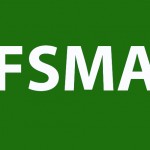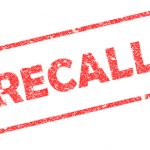The FDA Food Safety Modernization Act (FSMA) Preventive Controls for Human Food rule is now final, and compliance dates for some businesses began in September 2016. Economically Motivated Adulteration (EMA) or food fraud is a component in the Preventive Controls Rule. As the global supply chain becomes more complex, preventing EMA and compliance to Preventive Controls for Human Food rule can be a challenging task.
A food company’s supply chain can be the weakest link in their food safety program. Learn strategies and how to mitigate risks at the Food Safety Supply Chain Conference | June 4–5, 2017 | Rockville, MD, LEARN MORELast year GMA and Battelle released EMAlert, a tool that enables quantitative evaluation of a company’s supply chain to economically motivated adulteration. USP also provides a platform to help companies with food fraud mitigation strategies. In a Q&A with Food Safety Tech, experts from the USP Food Program, Jeff Moore, Ph.D., science director and Karen Everstine, Ph.D., scientific liaison explain how the Food Fraud Database 2.0 works and how it can help companies with FSMA compliance.
Food Safety Tech: How does the Food Fraud Database 2.0 assist food companies in identifying hazards and vulnerabilities?
Jeff Moore, Ph.D.: We reengineered the database [previously Food Fraud Database 1.0] from the ground up, including the structure of the data. Users wanted not just a source of high quality data to inform of risks and vulnerabilities that were related to food fraud but also some ability to analyze the information and get alerts and real-time information to figure out what to do in real time.

Karen Everstine, Ph.D.: Since it was reengineered, we’ve been able to include a lot of fields that allow food companies to tailor their results to information that is most applicable to them (i.e., geographic location). Automated analytics give a visual of what’s happening to see trends more quickly.
Moore: We have a team of dedicated analysts that are constantly scouting the public domain and looking for information globally to add to the database to make sure it’s the most comprehensive, up-to-date global database of food fraud information.
FST: What tools within FFD 2.0 can help companies with FSMA compliance?
Everstine: One of the things in the FSMA PC rule is the fact that food companies now have to identify potential hazards, whether they are intentional or unintentional, which includes food fraud-related hazards. One of the tools we built into the database is an EMA (Economically-Motivated Adulteration) hazard identification report. It allows users to input a list of their ingredients (those sourced and brought into the facility to create a finished food product), and then the report output identifies which ingredients are associated with potential hazards (i.e., adulterants that might pose a health threat to consumers). That’s the main tool we’ve built to target FSMA compliance.
Moore: One of the key parts of the PC rule as related to EMA is a question of whether the ingredient has a history of association with potentially hazardous adulterants. We put together an expert panel at USP and Karen [Everstine] was responsible for working with the panel to develop a classification system to identify adulterants that are potentially hazardous.






